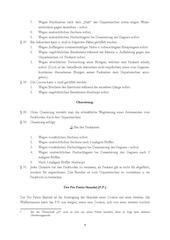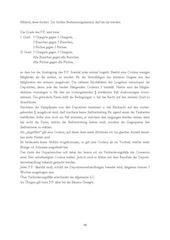PP suite
A Pro-Patria-Suite (short PP-Suite or PP , especially in Austria also Hatz ) is a series of scales with more stringent conditions between several members of two student associations . The name comes from Latin pro patria (for the fatherland) and French suite (sequence).
history
The name and custom of the Pro Patria Suite date from the middle of the 18th century, when the corps did not yet exist and comments were not recorded in writing. If one country team was insulted by another, their country (lat. Patria ) was also insulted according to the country team principle of that time ; Guestphalia demanded pro patria for Westphalia, Suevia for Swabia . The senior , the consenior , the secretary , an old and a young boy, a fire fox and a crazy fox fought against each other .
The PP-Suite between students of the University of Leipzig and the Friedrichs-Universität Halle , which was fought out on March 12, 1803 in the Posthorn of Reideburg , was famous . Three unitists and three compatriots (two Meißner and one Montane) fought for the Leipzig student body . The occasion, execution and consequences have been described in detail.
The corps took over this custom in the 19th century, but because of the abandonment of the country team principle, “Patria” was their own association. When, in the 1860s, the determination gauge for every corps student was introduced, and the academic saber replaced the bat in honorary trades, the PP suites lost their importance in dueling . In their place came the saber batch demand. PP games now served as a “tangible” expression of displeasure and showed that one could not allow oneself everything. The PP-Suite has retained this fine sense to this day. Occasionally, a PP suite is also carried out when a relationship is terminated.
In the dispute over seniority in the SC zu Königsberg, Littuania fought 104 PP games.
In order to limit the high costs of external PP suites, the oKC limited their number to four in 1881 . After the First World War , the so-called friendship PP developed at many universities . It should enable charged and good fencers to show their art. This was hardly possible under the conditions of the censorship.
The first PP game after the Second World War was struck on October 25, 1949 in Nuremberg between the consenior of the Corps Misnia IV and the Corps Onoldia , Klaus Ullmann and Gerhard Hering .
Today's regulation in the KSCV
The last time in 1978 was the Kösener SC Association laid down rules. The most important are:
- PP suites may not be overthrown for honor disputes. So they are not used to atone for real insults.
- No corps is obliged to accept a PP suite. The fencing of a PP suite may not be prohibited or offered to any corps by the local SC comment.
- A PP suite is at least “tripartite”, ie it consists of three sizes. In addition, it may only include as many games as the numerically weaker Corps Corpsboy has. As a rule, the charged, reactivations of inactive or elderly men for the purpose of PP fencing are not permitted.
- PP suites include at least 40 courses with six strokes. In addition, the customary comment stipulates the stricter conditions with regard to number and gears as well as the rights of the seconds in a PP game compared to the determination gauges.
- No more than four games should be played between corps of different senior citizens' conventions (SC) on the same occasion. In the case of three games, the required corps determines the place and time of the event; in the case of more games, half of the games are fought in the SC of the two parties, i.e. on the relevant comment with the local scale weapon - basket racket or bell racket. The change of the scale weapon and the comment at halftime of a game, which was sometimes agreed in the 19th century, no longer exists.
literature
- Erich Bauer : PP fencing . Deutsche Corpszeitung, vol. 66 (1965), p. 73 ff.
- Erich Bauer : Schimmerbuch for young corps students , 7th edition (2000), p. 106 ff.
- Christian Helfer : Kösener Customs and Customs. A corps student dictionary . Akademie-Verlag 1991, p. 145. ISBN 978-3-9801475-2-1 . GoogleBooks
- Hermann Rink : From student fencing to the mensur , in: Handbuch des Kösener Corpsstudenten, 6th edition, VAC Würzburg, 1985, pp. 151–171
Web links
Individual evidence
- ^ Robert Paschke : Student History Lexicon . GDS archive for university and student history. SH-Verlag 1999. ISBN 3-89498-072-9
- ↑ Erich Bauer: History of the Corps Lusatia in Leipzig 1807-1932 . Zeulenroda 1932, pp. 19-22.
- ↑ Erich Bauer: Schimmerbuch für Junge Corpsstudenten , 6th edition Bielefeld 1991, p. 106.
- ↑ Christian Helfer: Kösener Customs and Customs. A corps student dictionary , 2nd edition Saarbrücken 1991, p. 164.
- ^ Hering: Kösener Corpslisten 1996, 111 , 1224.
- ↑ Handwritten Paukbuch der Misnia and Lusatia 1942–1956, Archives of the Corps Lusatia Leipzig.
- ↑ PP guidelines of the KSCV, decided by the oKC 1978, in the manual of the Kösener Corps students, new edition 2011, Volume II, Chapter 2, pp. 2 / 69–2 / 71
- ^ Egbert Weiß : Scale lengths with changing weapons in Leipzig and Jena . Einst und Jetzt , Vol. 54 (2009), pp. 71-82.


